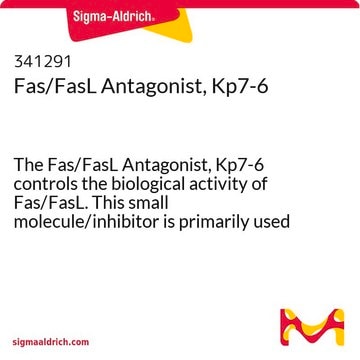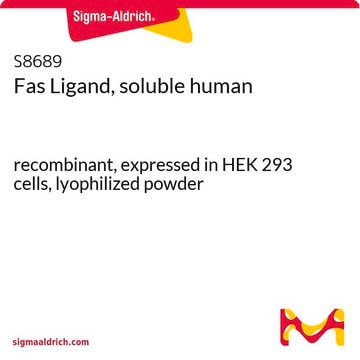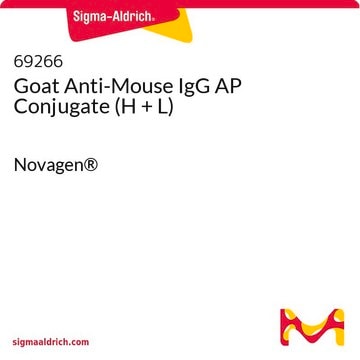F0427
Fas Ligand human
>95% (SDS-PAGE), recombinant, expressed in CHO cells, lyophilized powder
Synonyme(s) :
FasL
About This Item
Produits recommandés
Produit recombinant
expressed in CHO cells
Niveau de qualité
Pureté
>95% (SDS-PAGE)
Forme
lyophilized powder
Poids mol.
monomer calculated mol wt ~18 kDa
26-28 kDa by SDS-PAGE
Impuretés
endotoxin, tested
Numéro d'accès UniProt
Température de stockage
−20°C
Informations sur le gène
human ... FASLG(356)
Description générale
Application
- the study of FASLG stimulation in luteal cells obtained from mid-corpus luteum (CL) and
- the study of apoptosis induction and intracellular caspase-3 assay in human cells.
Actions biochimiques/physiologiques
Autres remarques
Forme physique
Remarque sur l'analyse
Mention d'avertissement
Warning
Mentions de danger
Conseils de prudence
Classification des risques
Eye Irrit. 2 - Skin Irrit. 2
Code de la classe de stockage
11 - Combustible Solids
Classe de danger pour l'eau (WGK)
WGK 3
Point d'éclair (°F)
Not applicable
Point d'éclair (°C)
Not applicable
Certificats d'analyse (COA)
Recherchez un Certificats d'analyse (COA) en saisissant le numéro de lot du produit. Les numéros de lot figurent sur l'étiquette du produit après les mots "Lot" ou "Batch".
Déjà en possession de ce produit ?
Retrouvez la documentation relative aux produits que vous avez récemment achetés dans la Bibliothèque de documents.
Notre équipe de scientifiques dispose d'une expérience dans tous les secteurs de la recherche, notamment en sciences de la vie, science des matériaux, synthèse chimique, chromatographie, analyse et dans de nombreux autres domaines..
Contacter notre Service technique









